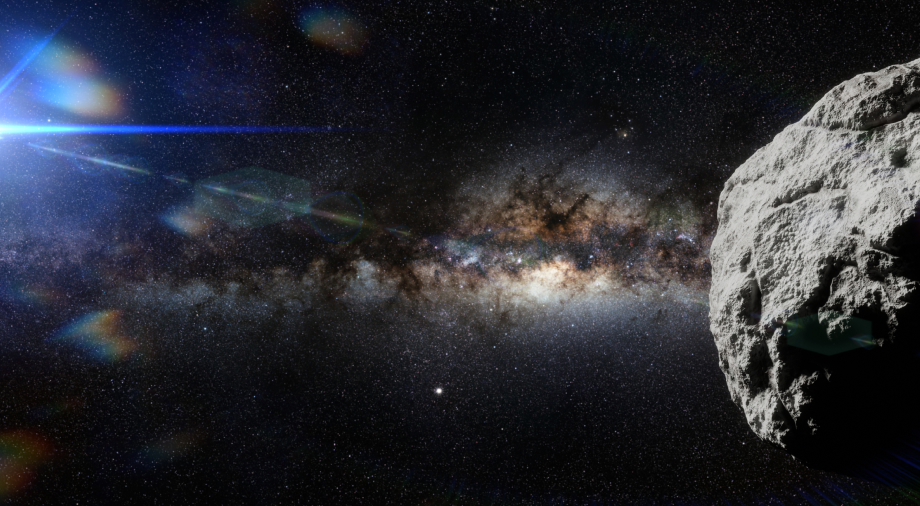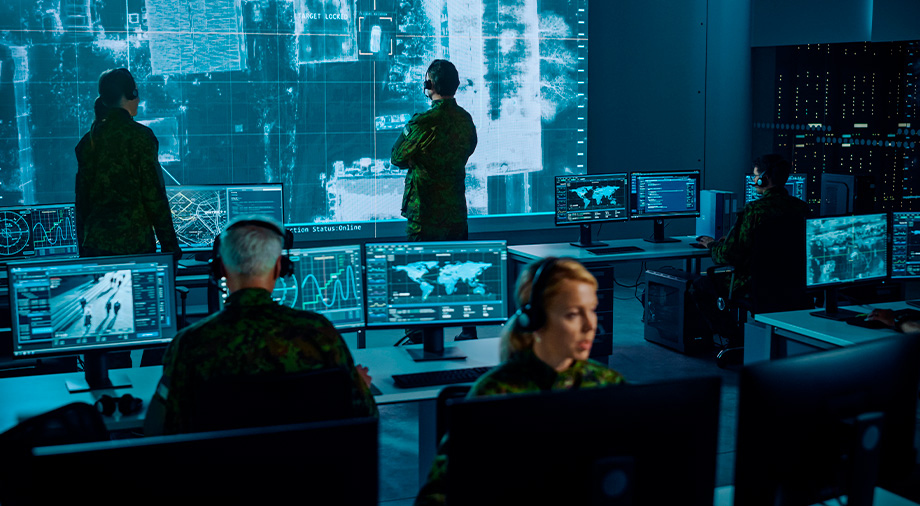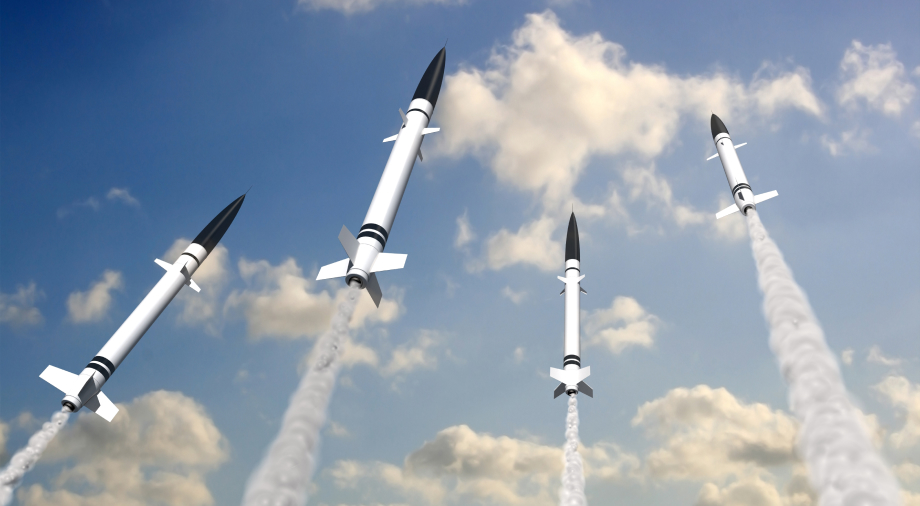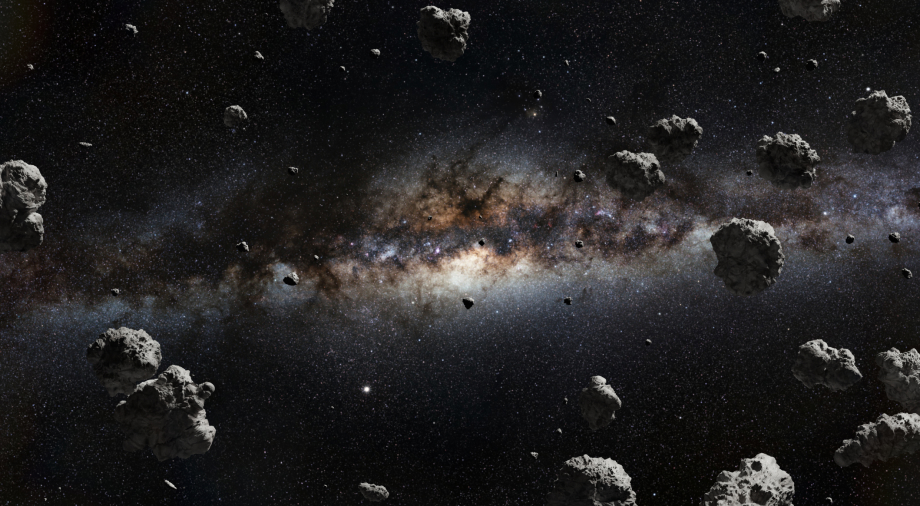We have already discussed how asteroids were discovered and the difficulties associated with classifying them. Now we will talk about how the study of these unusual celestial bodies is carried out.
The first voyage through the “death belt”
In the early 1970s, NASA began preparing the first missions to the outer solar system. Soon, the planners were faced with an important question: how traversable was the main asteroid belt, and was it really not a kind of “death belt” for space technology?
It was already known that the distances between the large asteroids in the Main Belt are quite extensive, and the probability of accidentally crashing into a rock is rather low. However, engineers were more frightened by another prospect – the Main Belt could be filled with a large number of different particles. At the speeds at which spacecraft travel, a collision with even an ordinary grain of sand could be fatal.
There was only one way to find the answer to this question – to send the vehicle through the Main Belt and see if it could survive. This task was assigned to a pair of probes, Pioneer 10 and Pioneer 11, launched in 1972 and 1973. Special detectors were installed on board to determine the characteristics of the hypothetical dust. They were designed to register particles and determine their physical parameters.
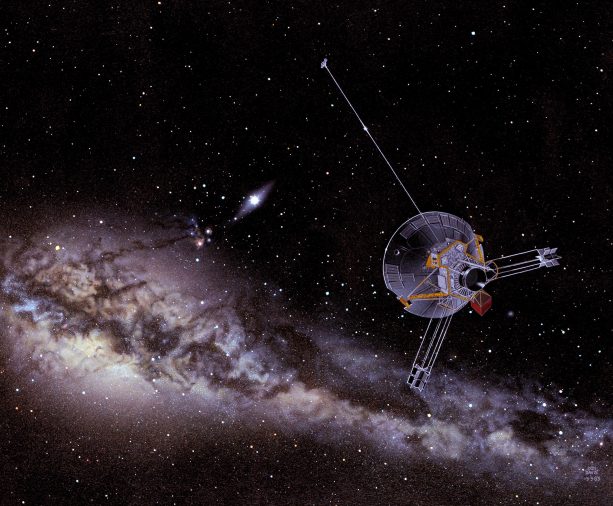
Interestingly, the designers of Pioneer 10 and Pioneer 11 were cautious about the probability of a successful outcome, giving only a 90% chance of safely crossing the Main Belt. However, all fears turned out to be greatly exaggerated. Although the probes’ instruments noticed some increase in dust particles, their concentration posed no threat to the Earth envoys. A few years later, the Voyager spacecraft confirmed this conclusion.
After that, it finally became clear that the Main Belt was relatively safe for navigation. While previously engineers had intentionally routed spacecraft as far away from asteroids as possible, now it’s different. When a passing asteroid is near the spacecraft’s potential path, its trajectory is built to ensure a close passage.
The first visits to asteroids
The Galileo probe was the first spacecraft in history to visit an “associated” asteroid in this way. In 1991, it flew the 12-kilometer asteroid Gaspra, and two years later, it visited the 15-kilometer asteroid, Ida. The second visit came as a surprise – it turned out that Ida had a 1.5-kilometer satellite named Dactyl.
Other missions soon followed Galileo’s example. In 1999, the probe Deep Space 1 performed a flyby of the asteroid Braille; in 2002, the mission Stardust visited the asteroids Annafranc, and Rosetta, heading to the comet Churyumov-Gerasimenko in 2008 and in 2010, visited the Steins and Lutetia.
Still, in all those cases describing asteroids was not the main purpose, but a kind of free simulator. Engineers mainly used them to check the correctness of the scientific tools of the probes and practice future operations. In addition, all encounters with the asteroids took place on flyby trajectories and were very short-lived.
The first mission in history specifically designed to study asteroids was NEAR, later renamed NEAR Shoemaker after Eugene Shoemaker, the famous American planetary scientist. Its target was the first discovered near-Earth asteroid, Eros.
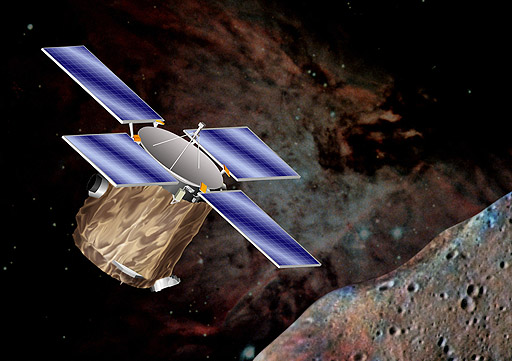
NEAR Shoemaker launched in 1996. It also visited the Matilda asteroid on the way to its goal. After a series of maneuvers, it entered a permanent orbit around Eros in 2000. NEAR Shoemaker studied the body in detail, mapping and determining the chemical composition of its surface. The cherry on the cake was a soft landing on the surface of Eros, undertaken after the probe ran out of fuel. Despite the fact that such an operation was not foreseen by either the flight plan or the design of the spacecraft, surprisingly, it was a success. NEAR Shoemaker not only managed to descend to the surface of Eros without damage but also continued to transmit information for some time.
The NEAR Shoemaker was not only an important milestone on the way to studying asteroids but also played a key role in the history of the New Horizons mission to Pluto launched in 2006. The fact is that this project was implemented not by the Jet Propulsion Laboratory, which built and accompanied the Pioneer and Voyager missions, but by the Applied Physics Laboratory of Johns Hopkins University (APL). The success of the NEAR Shoemaker project was the main reason why NASA decided to entrust APL with the creation of the New Horizons spacecraft. So, it’s quite possible that without Eros, we still wouldn’t know exactly what Pluto looks like.
Journey through the Main Belt
The next landmark asteroid mission was Dawn. Its target was the two largest objects in the Main Belt, Ceres, and Vesta. Dawn was not supposed to study them from a flyby trajectory. The flight plan implied entering a permanent orbit around Vesta and studying it for about a year. Then, Dawn was to leave the vicinity of the asteroid and head for Ceres, entering orbit around it.
No spacecraft has ever explored two celestial bodies at once from orbit before. To meet this challenge, engineers equipped Dawn with three xenon ion engines. Unlike traditional chemical units, these engines have negligible thrust but boast an impressive time of continuous operation (it can be measured in years) with relatively low fuel consumption. The combination of these two factors is perfect for flights between relatively weak gravity objects of the Main Belt.
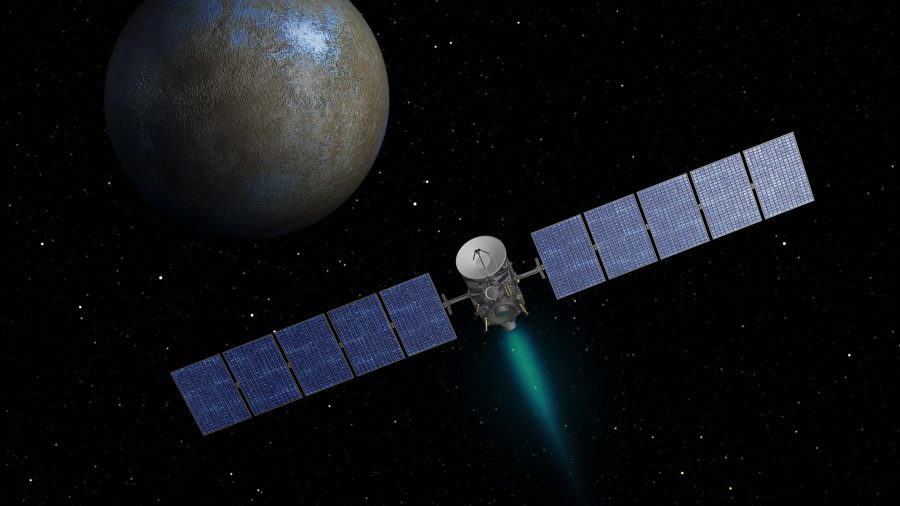
Dawn was launched in 2007 and reached Vesta after four years of flight. The 520-kilometer asteroid turned out to be a very remarkable body. According to astronomers, it is a protoplanet – a large planetary embryo that underwent an internal fusion stage, which led to the differentiation of its interior (i.e., it formed an iron-nickel core and mantle). It is believed that at the dawn of the solar system, hundreds of similar bodies constantly collided with each other until, eventually, a few lucky beggars became full-fledged planets. Thus, Vesta is a unique relic, miraculously preserved today in almost unchanged condition as a reminder of those tumultuous times.
Another notable sight of the asteroid is the giant crater Reyasilvia. Its diameter is 500 km, which is comparable to the diameter of Vesta itself. The height of the central peak of Reyasilvia is about 22 km so it can compete with the famous Mount Olympus on Mars. According to the scientists’ estimations, the punch that led to the formation of Reyasilvia knocked out about 1% of all the substance of Vesta into space. This debris spawned its own family of asteroids.
After completing its exploration of Vesta, Dawn left it and headed for Ceres. The spacecraft entered a permanent orbit around the dwarf planet in 2015 and worked until its fuel reserves were exhausted in 2018.
Ceres came out even more surprising than Vesta. One of Dawn’s most famous discoveries was the bright spots on Ceres’ surface. Measurements showed that they consisted of sodium carbonate (soda) and ammonium chloride. According to the most popular version, the spots formed after a mixture of water ice and various salts was ejected from the surface of Ceres. The ice subsequently evaporated, leaving only bright deposits of salts.
Another unexpected finding of Dawn was Mount Ahuna. This is a five-kilometer formation that is most likely a cryovolcano. The presence of the cryovolcano and salt deposits indicates that geological activity still occurs on Ceres. Moreover, models of the dwarf planet’s internal structure suggest that an ocean, or at least a layer of liquid water, may still exist in its interior.
Dawn also managed to shed light on the origin of Ceres. Data on its surface composition suggest that it originally formed not in the Main Belt but much further away, somewhere beyond Saturn’s orbit, and only later moved to its current orbit.
Delivering asteroidal soil samples to Earth
Several years before Dawn was launched, the Japanese Aerospace Exploration Agency (JAXA) launched its own asteroid mission called Hayabusa. Its goal was to bring a soil sample from the asteroid Itokawa to Earth.
Hayabusa became almost a textbook embodiment of Murphy’s Law. Everything that could go wrong on this mission went wrong. There were numerous technical glitches, engine failures, and the loss of an autonomous robot. Nevertheless, three years later than planned, the Hayabusa managed to deliver a capsule containing several asteroid particles to Earth. Of course, it was much less than planned, but given all the dramatic flight twists and turns, even such a result looked like a miracle.

JAXA worked out previous mistakes and launched the next Hayabusa-2 mission in 2014, targeting the asteroid Ryugu. This time it was way better. Hayabusa-2 successfully carried out a rather rich research program. In addition to collecting soil, it also included landing several autonomous robots on the asteroid and
shelling with copper to create a crater to explore the deep rocks.
The capsule with samples collected by Hayabusa-2 successfully landed on Earth in 2020. As for the spacecraft itself, its mission was extended, and it will study several more asteroids in the future.
As early as next year, earthlings will have another sample of asteroidal matter at their disposal. It will be delivered by the OSIRIS-REx spacecraft, which studied the asteroid Bennu from 2018 to 2021.
Despite its modest size (only 500 meters in diameter), Bennu turned out to be a body of interest. It is studded with an unexpectedly large amount of huge rock debris and occasionally throws rocks into space. In addition, it turns out that Bennu is an extremely loose object. It is essentially a cluster of rocks held together by gravitational forces. Had OSIRIS-REx not engaged its thrusters to move away from the asteroid at a safe distance during the matter sampling, it could have entirely fallen into it, just like a pool filled with plastic balls.
After dropping a capsule with samples of Bennu’s matter, OSIRIS-REx will also head toward a new target, Apophis, once considered the most dangerous asteroid in the solar system. Their rendezvous will take place in 2029.
Looking back at the asteroid missions, you can easily see their evolution. It started with quick fly-bys, and then it was their turn to go into orbit and take samples. Recently, the DART mission took the next step, changing the asteroid’s orbit. This was necessary to test the commonly considered possibility of defending against a celestial body threatening the Earth by kinetic impact.
The target of DART was the 160-meter asteroid Dimorph, a satellite of the larger object Didim. The DART collision with the asteroid occurred on September 26, 2022. DART will hit Dimorph at a speed of 6.6 kilometers per second. As scientists claim, the result exceeded expectations several times – the change in the orbital period of the Dimorph was reduced by 32 minutes. However, a reduction of only 73 seconds would have been a success.
The collision and its aftermath were monitored not only by radar and a network of ground observatories but also by the LICIACube cubesat with a Dragonfly Aerospace camera. It separated from DART a few days before the collision and filmed the moment of the collision.
Future asteroid exploration missions
In a few years, the DART experiment will continue. In 2024, ESA will launch the Hera spacecraft. At the end of 2026, it will reach Dimorph, after which it will take photographs of the formed crater and conduct a comprehensive study of it. These data will complement the results obtained during ground-based observations and help astronomers better understand the properties and evolution of binary asteroids.
However, NASA is not the only one interested in the possibility of asteroid deflection. China recently announced its intention to launch a mission in 2026 that will also hit an asteroid. Its target will be 2020 PN1, a potentially dangerous near-Earth object of the Apollo family, about 40 meters in diameter. The main difference between the Chinese project and DART is that two vehicles – the impactor and the descent module – will be sent to the asteroid simultaneously. The latter will have to make a soft landing on 2020 PN1, examine it, and evaluate the impact’s consequences.
The development of anti-hazard technologies is not the only area of asteroid research. For example, last year, NASA sent the Lucy spacecraft into space. Its target will be the Trojan asteroids of Jupiter. The apparatus will have to test the theory that, like Ceres, they were originally formed at a much greater distance from the Sun and then moved to the current position. There were some tech difficulties, like an unopened probe’s solar array. Based on the latest news, however, NASA engineers managed to stabilize the panel, and it should not interfere with the mission.

Another intriguing asteroid is Psyche. This 250-kilometer object is considered the largest metallic body in the solar system. Supposedly, Psyche is a fragment of a destroyed protoplanet’s core. The Psyche mission was tasked with verifying whether or not this was true. It was supposed to go into space in August this year, but unfortunately, NASA had to cancel the launch due to the unreadiness of the vehicle’s ground simulator. So far, NASA has not announced a new launch date for Psyche. Most probably, it won’t take place until 2023.
We should not forget about the prospects of a human-crewed expedition to the asteroid. Of course, a couple of years ago, NASA buried the project of such a mission. However, mind that the agency changes its plans quite often, and China is always the second point to consider. From a technical point of view, a flight to an asteroid is a much easier task than landing on the Moon.
In addition to its symbolic significance, the human-crewed mission may also lay the foundation for developing subsequent commercial asteroid exploitation projects. Sure, as we have noted, we can hardly expect the appearance of some space miners extracting ore, which will then be transported to Earth. Still, asteroids could be an essential source of resources for missions to deep space. To make use of them, humanity has much to learn about these relics left over from the solar system’s formation.

